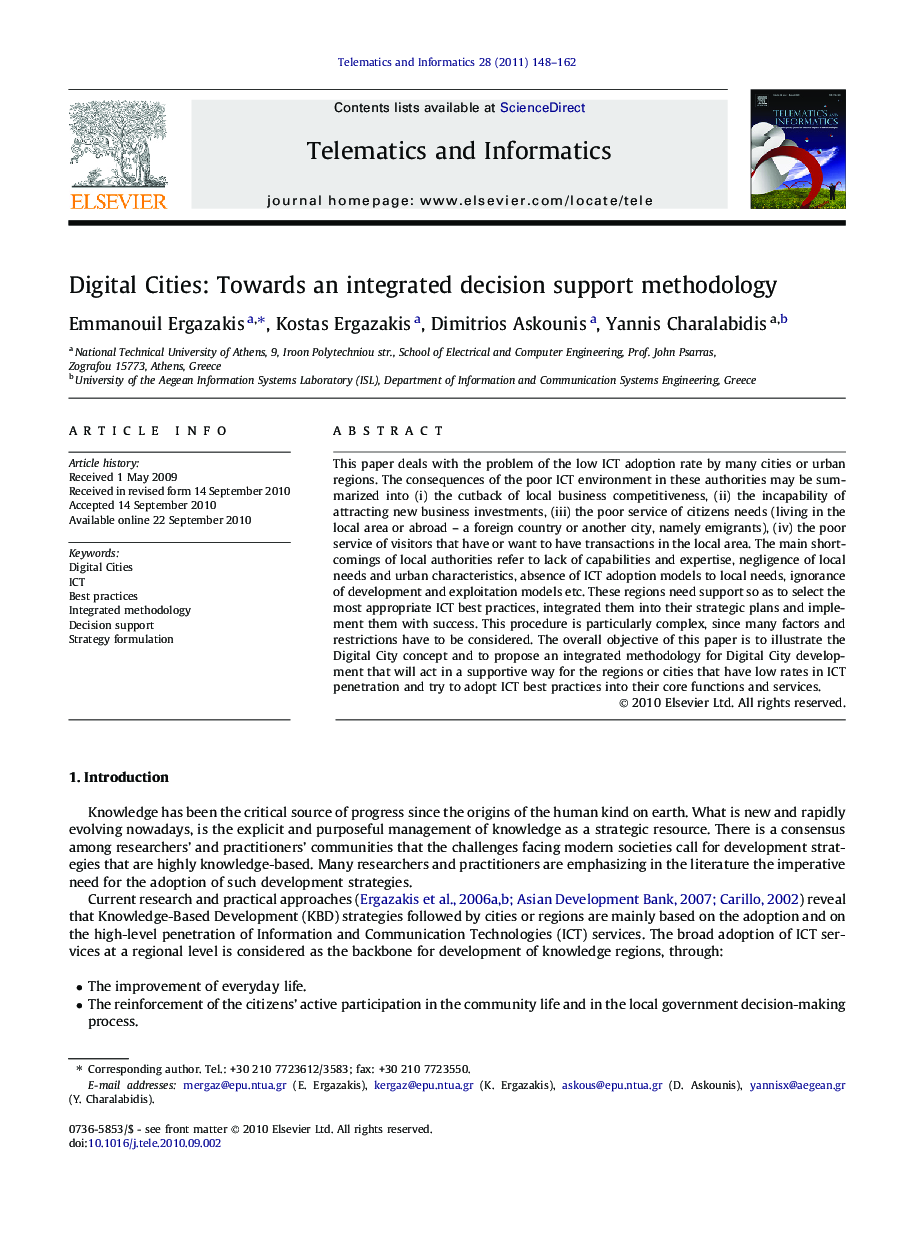| Article ID | Journal | Published Year | Pages | File Type |
|---|---|---|---|---|
| 465357 | Telematics and Informatics | 2011 | 15 Pages |
This paper deals with the problem of the low ICT adoption rate by many cities or urban regions. The consequences of the poor ICT environment in these authorities may be summarized into (i) the cutback of local business competitiveness, (ii) the incapability of attracting new business investments, (iii) the poor service of citizens needs (living in the local area or abroad – a foreign country or another city, namely emigrants), (iv) the poor service of visitors that have or want to have transactions in the local area. The main shortcomings of local authorities refer to lack of capabilities and expertise, negligence of local needs and urban characteristics, absence of ICT adoption models to local needs, ignorance of development and exploitation models etc. These regions need support so as to select the most appropriate ICT best practices, integrated them into their strategic plans and implement them with success. This procedure is particularly complex, since many factors and restrictions have to be considered. The overall objective of this paper is to illustrate the Digital City concept and to propose an integrated methodology for Digital City development that will act in a supportive way for the regions or cities that have low rates in ICT penetration and try to adopt ICT best practices into their core functions and services.
